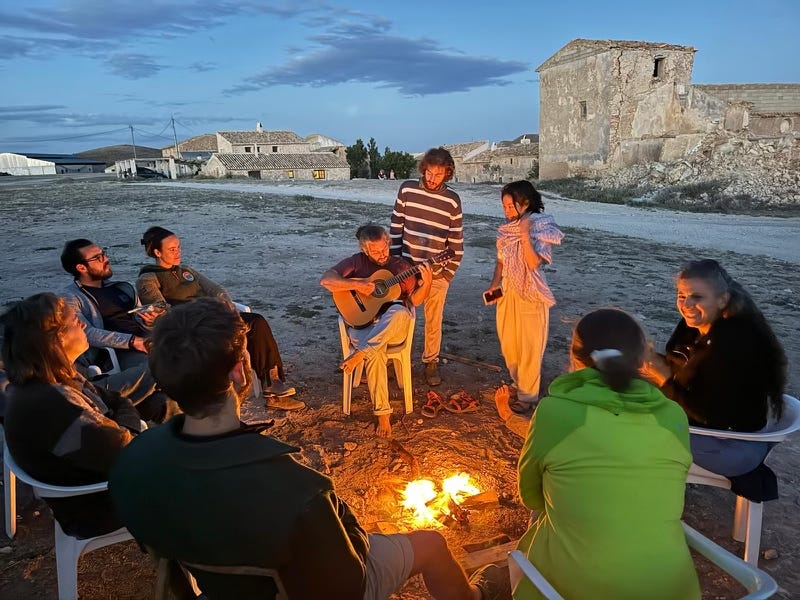
By Diana Donlon
We arrived at La Junquera in the morning. A towering circle of poplar trees and a glittering pond marked the farm’s entrance. In every direction rolling green fields, dotted with silky red poppies, gleamed in the mid-May sun. Our group was warmly greeted by a passel of happy farm dogs and our winsome hosts, husband-and-wife team Yanniek Schoonhoven and Alfonso Chico de Guzmán.
Twice a year Regeneration Academy (RA) offers a week-long immersive course at La Junquera, a regenerative organic farm in the Altiplano region of Murcia province in Southeast Spain. (The course, taught in English, is one of the stellar opportunities you can find on the Soil Centric app.) This past spring I got the chance to go and learn firsthand about La Junquera and other regeneration projects that are underway in Spain. While its Mediterranean climate is similar to California’s, the region's context is very different, and as every student of this movement knows, understanding context is imperative to success in regenerative agriculture.
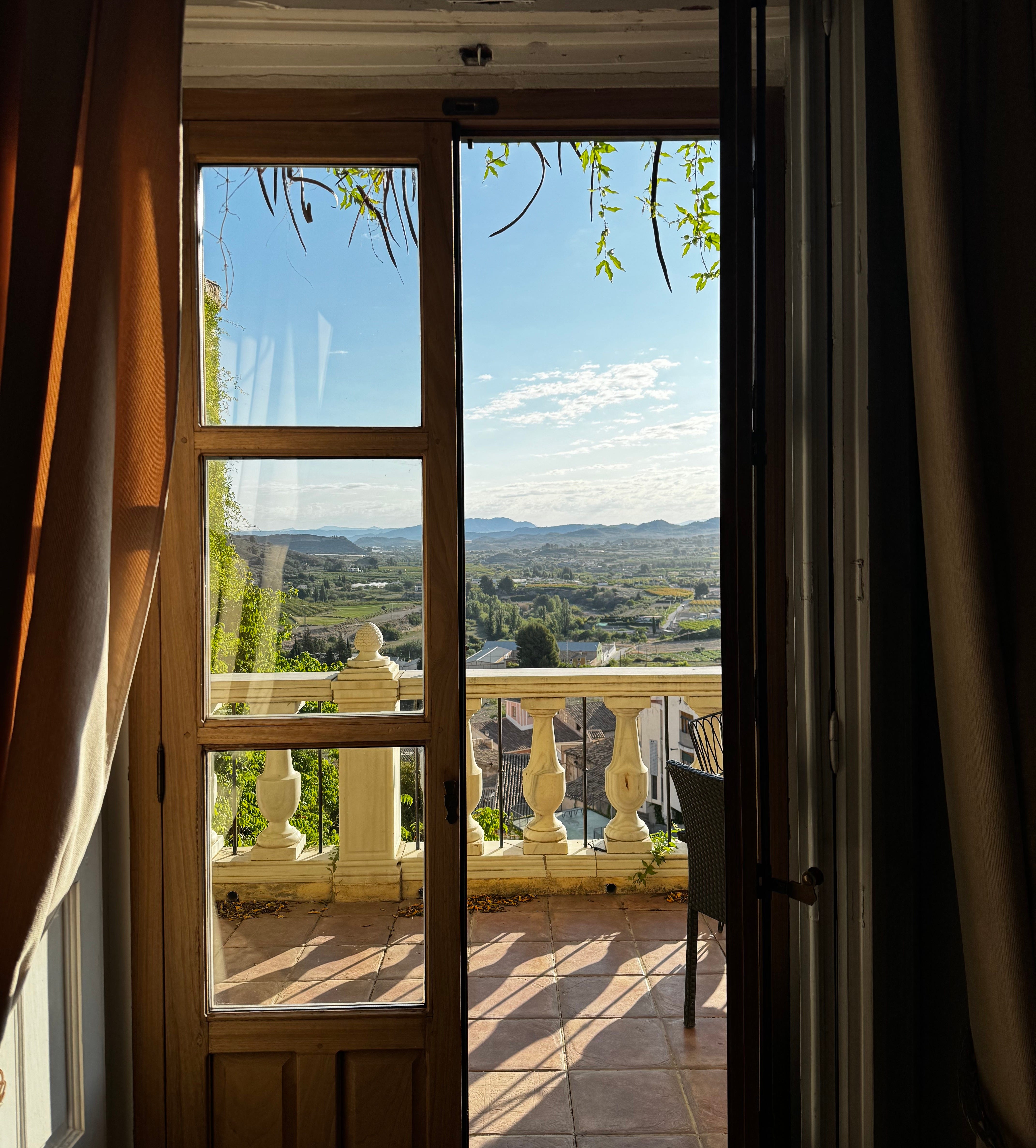
RA participants are housed in a beautiful manor house thirty minutes from the farm in the sleepy hill town of Cehegin. The house is unassuming from the street, but behind the heavy wooden doors, a formal marble staircase leads up to a long dining room and a gracious balcony with a sweeping view over the valley below. In the mornings and evenings, scores of soaring swifts frame the tranquil landscape.
Over 500 years ago, the King of Spain sent noble families to the region to help secure the border against invaders, and this house has been in the family of the Chico de Guzmáns ever since. Spanish agriculture clearly has very deep cultural roots! But much is different today. Until 1969, the village on La Junquera farm was home to 120 people. This changed with the introduction of the tractor to rural Spain. Suddenly one man driving a tractor could do the work of fifty. In villages across the Altiplano, shops and schools closed, and houses fell into disrepair as families went elsewhere for work.
During the week, several of our RA instructors recounted how, these days, Murcianos get the memo at a young age that their future lies not in the arid and underpopulated Altiplano region, but far off in Spain’s big cities. In fact, children are often actively discouraged by their families from pursuing farming at all. To counter this narrative, Regeneration Academy has started Viva el Campo, a program that brings local high school students to La Junquera Farm to check out the latent potential and transformative power of regenerative agriculture.
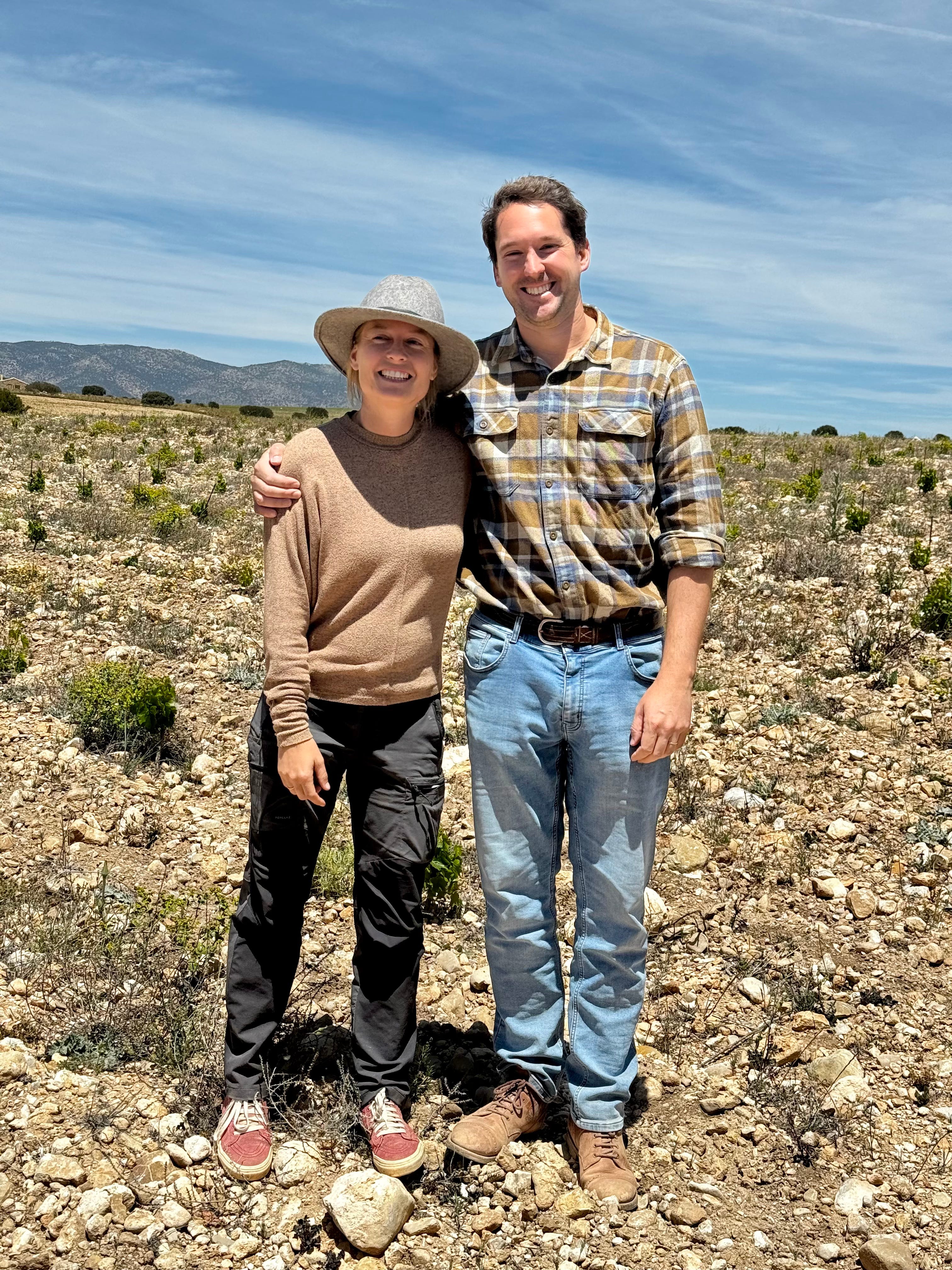
Yanniek Schoonhoven arrived in La Junquera in 2015 to undertake a survey for the Dutch organization Commonland. At the time, Alfonso Chico de Guzmán was living alone in the abandoned village. Alfonso, who had been raised in Madrid and studied business and finance at university, was the only one of four siblings who had an interest in farming the family’s ancestral land. Yanniek and Alfonso fell in love and soon married, and they now have two young children. In addition to finding each other at La Junquera, they've found a deep allegiance to the land and its community that they are committed to sharing. They’ve been slowly refurbishing the old housing stock while building inviting communal spaces. Today, about fifteen people, including students, academics, entrepreneurs, and children, live in the little village at the farm’s center. Everyone in this intentional community is contributing to one of the most ambitious land restoration projects in all of Europe.
The Academy is Yanniek’s brainchild. My particular session was co-taught by two California colleagues from Climate Farm School: Dr. Laney Siegner and Ryan Peterson. (Climate Farm School, offered in multiple locations, is another fabulous immersive opportunity featured on Soil Centric’s app). Our cohort of sixteen delightful individuals included people from The Netherlands, Germany, the U.K., Israel, and California. Everyone had a different reason for participating—from one student starting a market-garden farm in France to another eager to accelerate regeneration through impact investing. By creating a shared journey for its students, Regeneration Academy not only teaches the mindset and principles of regenerative agriculture, but helps grow a far-reaching community of regenerators.
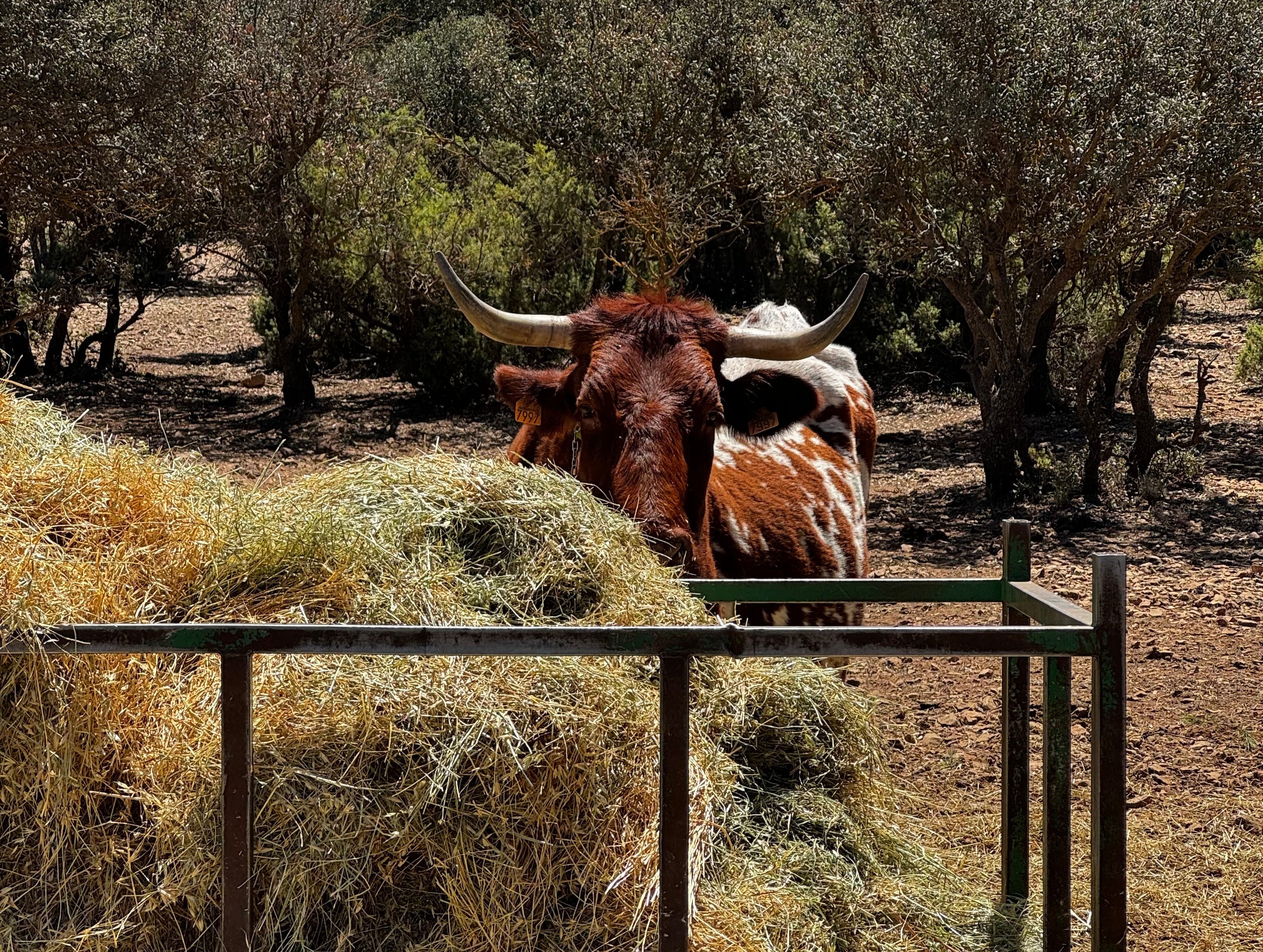
Meanwhile, under Alfonso’s steady management, the farm is prototyping a regenerative roadmap for the Iberian Peninsula. La Junquera’s 1,100 hectares (2,718 acres) grow a diversity of crops, including dry-farmed almonds, pistachios, vegetables, and aromatics like lavender and sage. They’ve also reintroduced Murcia Levantina cows, a local breed with long horns. Until recently, the surrounding region grew cereals and legumes, but the rains are now too unreliable, and many of the local farmers lease their land to lettuce growers who export the greens to Northern Europe. Growing lettuce in this arid region means mining and unintentionally exporting precious groundwater (i.e., it’s not an appropriate crop for this context!). Once the water is depleted, the growers move on. Alfonso is creating economic options by not relying on mono-cropping and by making room to experiment with a variety of regenerative practices, such as planting hedgerows to create windbreaks and habitat for beneficial insects. While we were there, he was happy to learn that the municipal government had given him permission to graze his 120-head herd in the stunted cereal fields.
One afternoon we made an excursion down to see another important locus for regeneration: Camp Altiplano, the flagship site of the global Ecosystem Restoration Communities (ERC) network. Filmmaker and ecologist John D. Liu had the idea of bringing volunteers together to restore degraded landscapes, and in 2017 Yanniek and Alfonso provided the ERC with five hectares to prototype the camp. (Liu is a founding member of Soil Centric’s Advisory Board, and we’ve championed the ERC since its beginnings.) We were greeted by the ERC volunteers, who are restoring the degraded ecosystem by bringing soils back to life. Many of these intrepid souls come to stay for months at a time and live off-grid in simple structures that collect solar energy and rainwater. Today ERC is a global movement of seventy diverse restoration initiatives!

Beyond La Junquera, Yanniek and Alfonso are working with the ALVelAL Association, a local initiative promoting landscape restoration in the greater region. ALVelAL works to find “practical solutions to fight against depopulation, the effects of climate change, and soil erosion” and helps develop supply chains for local gastronomic products. The association is supported by Commonland, the organization that first brought Yanniek to the high plains of Southeast Spain. Commonland’s philosophy of social, economic, environmental, and cultural landscape restoration—what they call the "4 Returns"—is integral to the RA curriculum and guides Yanniek and Alfonso’s decision-making process.
You’d be hard-pressed to find a couple as hard working, capable, and visionary as Yanniek and Alfonso, and their sense of purpose, enthusiasm, and hospitality is contagious. As if all of this wasn’t enough, they also think long-term and big-picture. On the second-to-last day of the course, Yanniek suggested we drive back to the house in Cehegin by following a dry river bed. She wanted us to understand the context of their latest wildly ambitious goal: regenerating thirty miles of the Altiplano's Quipar River.
What’s left of the river has its source at a small pond on La Junquera, built by none other than the Romans. One morning over coffee, Yanniek and Alfonso hatched the Quipar restoration idea. They’d just seen the documentary film Wild Life, chronicling the far-sighted ecosystem-restoration work of Kristine Tompkins and her late husband, Doug. The epic scale of the Tompkins’s work in the Patagonian region of South America inspired Yanniek and Alfonso to expand their vision of what’s possible. They decided to reach for the stars and put their idea for the river regeneration out into the universe.
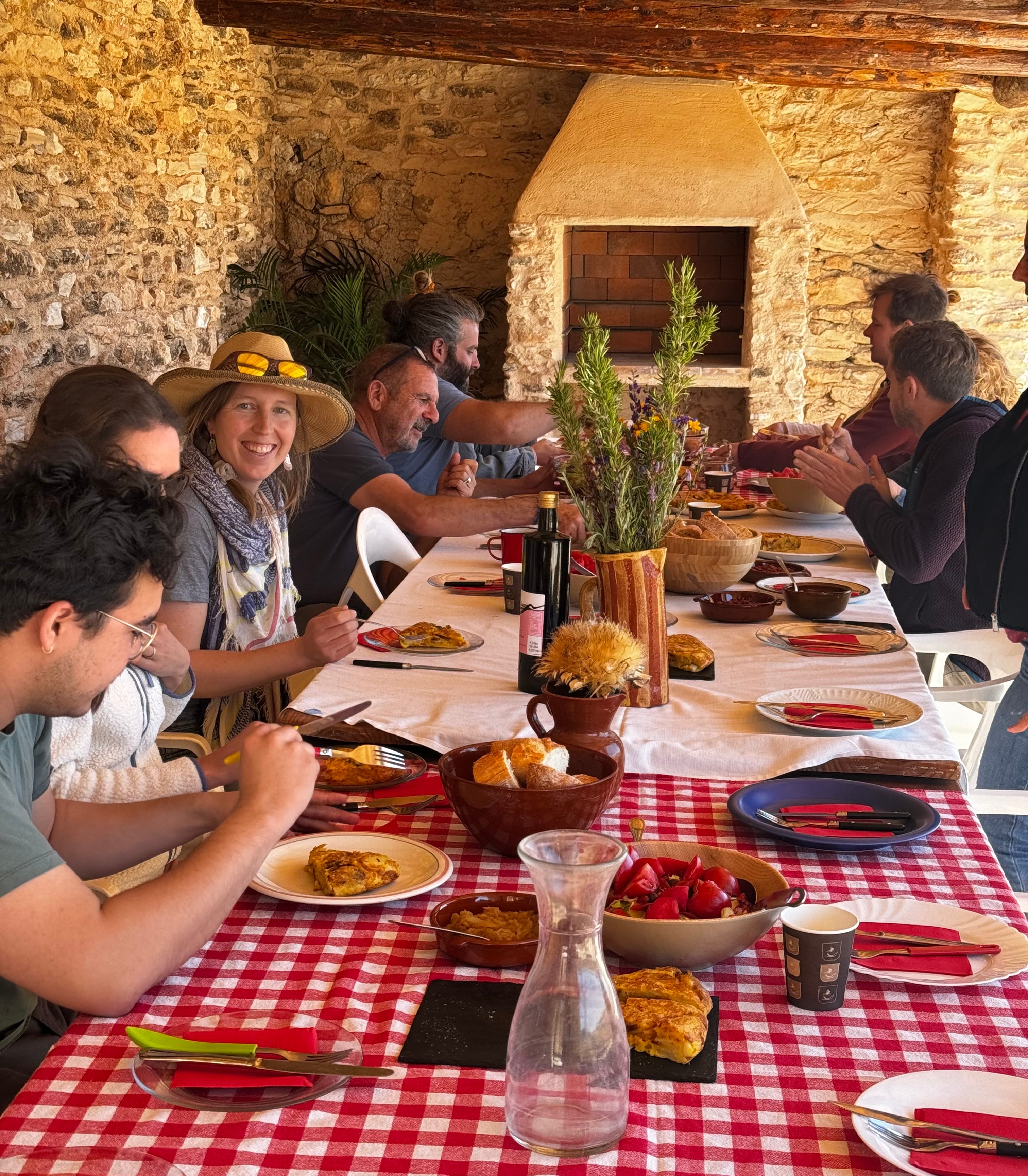
The week at RA went by quickly and I’m grateful to have had the opportunity. I learned so much about the Altiplano’s agricultural history. I learned new ways of thinking about seed-saving for climate adaptation. I learned how to tend a sapling so it can lock in water in arid conditions. I learned about Nofence, a technology that makes it easier to graze animals on pasture. I met brilliant young professionals eager to work regionally to scale regeneration. And at every delicious meal, I was reminded that the farmers who grow our abundance of healthy, nutrient-dense food are unsung heroes.
I’m using my fresh energy to collaborate more intentionally with forward-looking initiatives like Regeneration Academy, Climate Farm School, and Ecosystem Restoration Communities. Like Soil Centric, these organizations are working toward a shared goal: creating a much-needed alliance for on-the-ground regenerators who are connected, have agency, and are inspired to create the conditions for the Earth to heal. Together we can make it happen—farm by farm, river by river.
